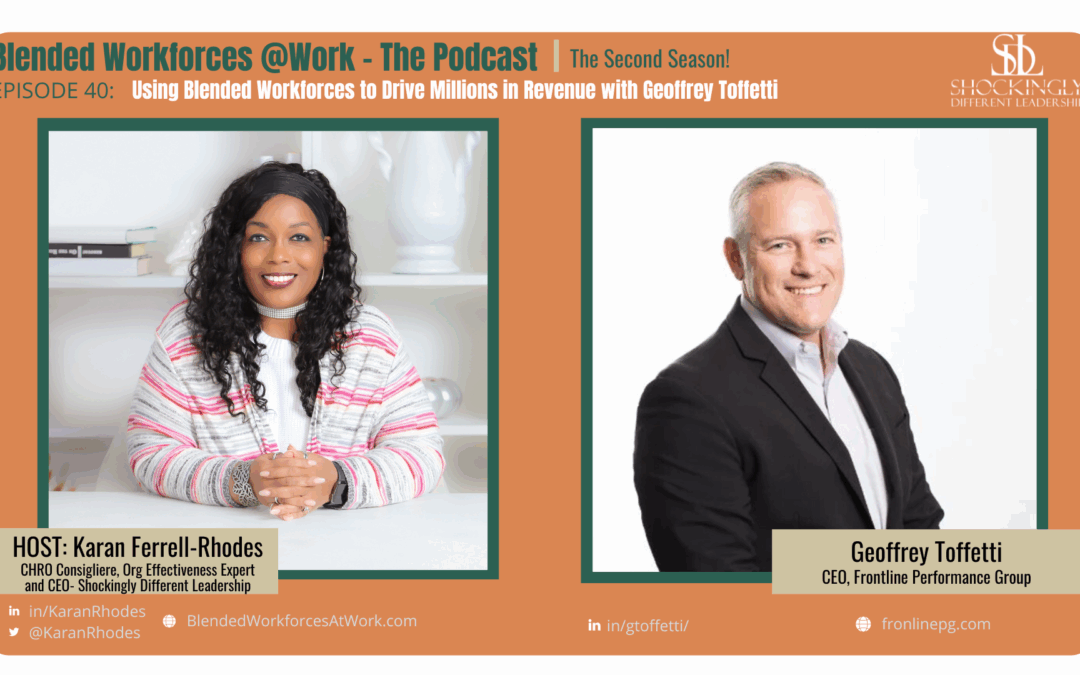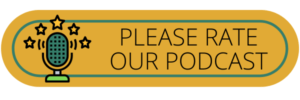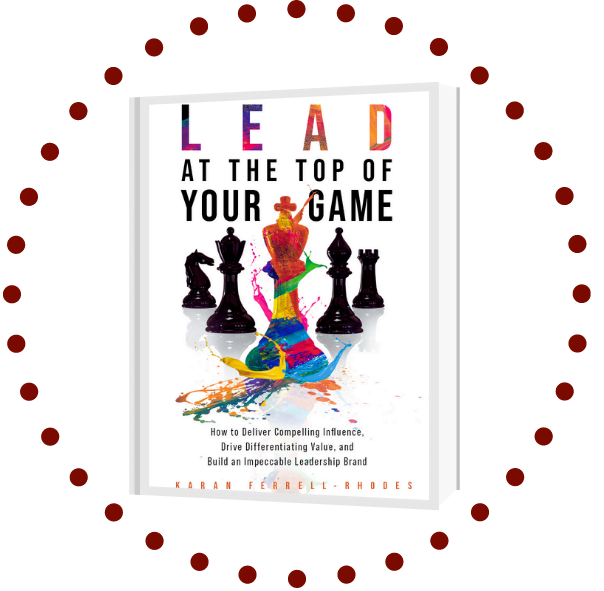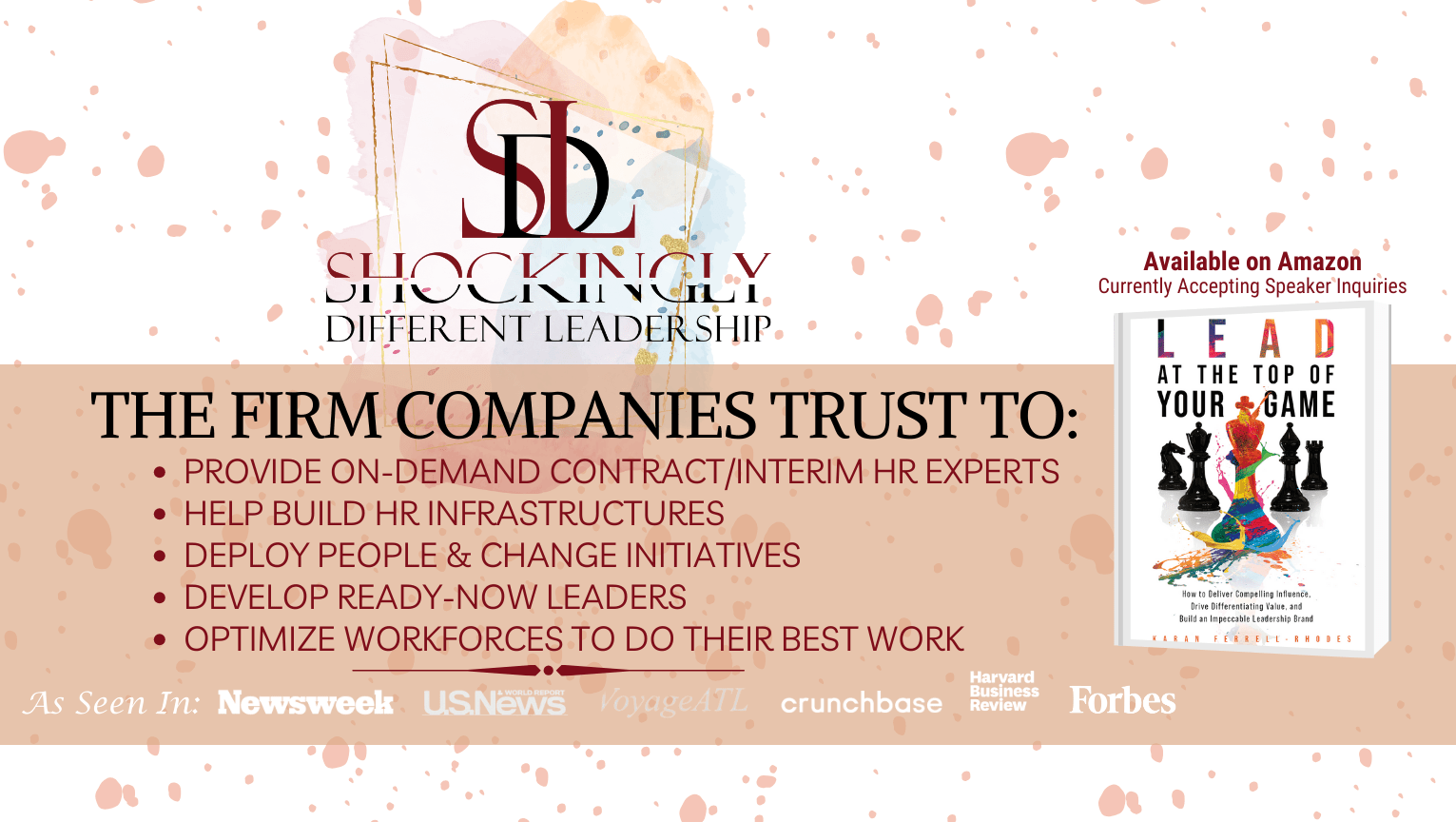IN THIS EPISODE, KARAN FERRELL-RHODES INTERVIEWS GEOFFREY TOFFETTI.
Geoffrey discusses Frontline Performance Group’s shift to a SaaS model driven by efficiency goals, COVID-19’s impact, and the need for scalability. He outlines the benefits and challenges of blended workforces, underscores the importance of transparent vendor relationships, and shares a case study on IBM’s Fragmented Work Program, highlighting FPG’s role in contractor management.
Geoffrey also emphasizes leading with intrapreneurship, advocating for innovation, adaptability, and problem-solving to drive growth in a rapidly evolving business landscape.
Geoffrey Toffetti is the CEO of Frontline Performance Group (FPG) and shares insights into the company’s strategic evolution and leadership philosophy.
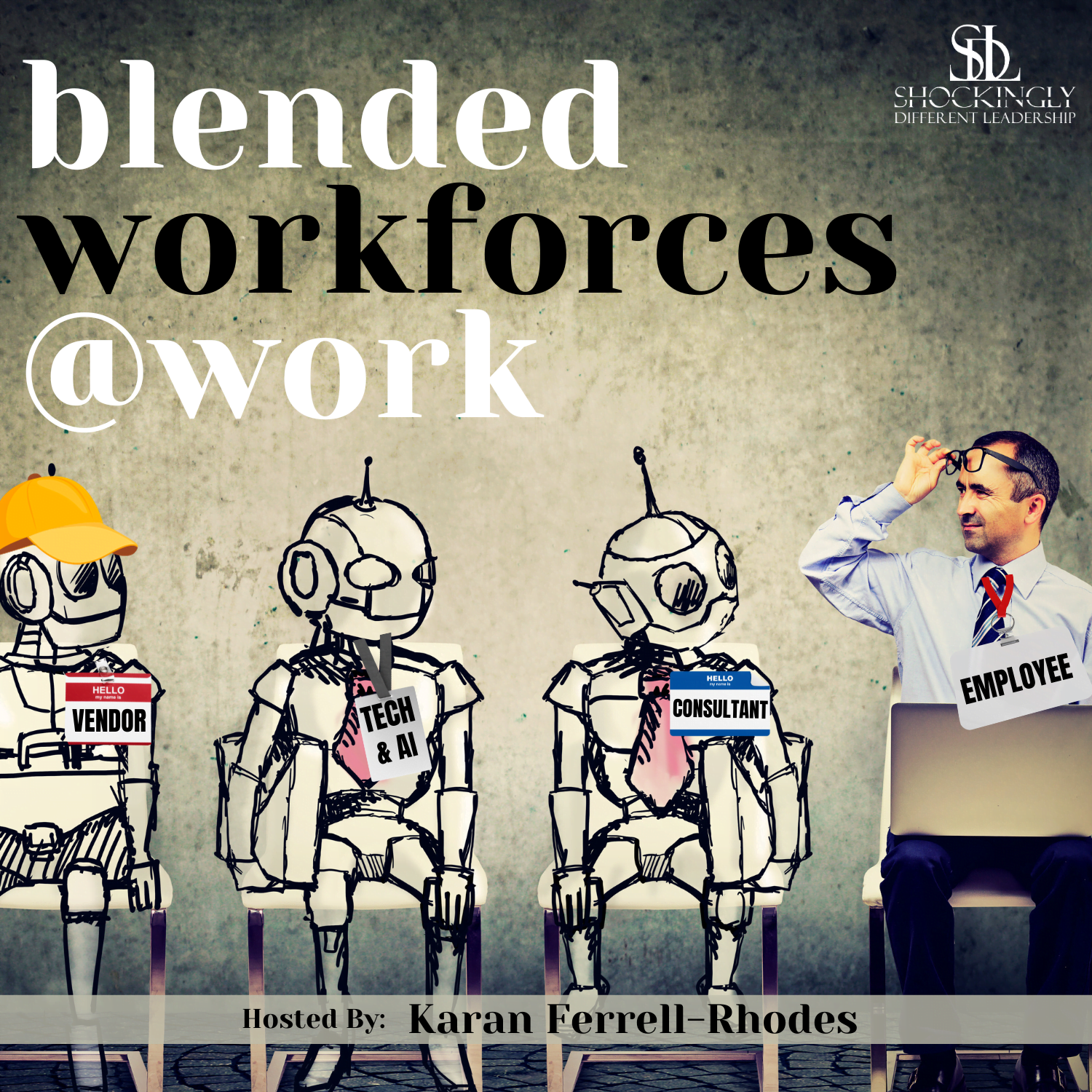
Posted by
SDL Media Team
Rather view our video podcast?
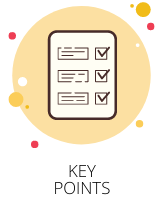
WHAT TO LISTEN FOR:
- Why did Frontline Performance Group shift to a SaaS model?
- What are the advantages of a blended workforce?
- What challenges come with managing external resources?
- What was IBM’s Fragmented Work Program about?
- How did Frontline Performance Group contribute to IBM’s program?
- How can vendors avoid vendor fatigue and build strong relationships?
- Why leading with intrapreneurship is valuable.
“You want to be the breath of fresh air to your customers.”
FEATURED TIMESTAMPS:
[03:11] Personal Background
[05:28] Career Journey
[08:49] The Evolution of Frontline Performance Group’s Business Model
[12:02] Signature Segment: Geoffrey’s entry into the LATTOYG Playbook: Benefits and Challenges of Blended Workforces
[19:07] Case Study: IBM’s Fragmented Work Program
[22:43] Addressing Vendor Fatigue and Building Strong Vendor Relationships
[26:45] Signature Segment: Geoffrey’s LATTOYG Tactic of Choice: Leading with Intrapreneurship
[29:22] Contact Information
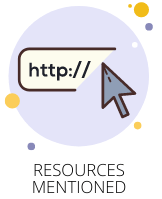
ABOUT GEOFFREY TOFFETTI:
Geoffrey Toffetti is the CEO of Frontline Performance Group (FPG), based in Florida. He leads the company in partnership with over 2,500 hotels across more than 100 countries, helping generate millions in revenue for major hospitality brands such as Hilton and Marriott. His career in hospitality began as a valet, where he developed strong sales skills that shaped his professional path. Before joining FPG, Toffetti was the first employee at Workforce Logiq (formerly ZeroChaos), where he advanced to Vice President, overseeing contract workforce strategies and acquisitions.
Since joining FPG in 2011, he has played a pivotal role in the company’s growth, securing the Waldorf Astoria as its first hotel client and driving global expansion. He is now focused on extending FPG’s service-based sales solutions into the Food & Beverage sector.
LINKS FOR GEOFFREY:
- Website: fronlinepg.com
- LinkedIn: linkedin.com/in/gtoffetti/
ADDITIONAL RESOURCES FOR YOU:
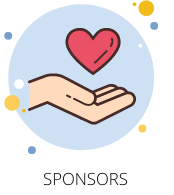
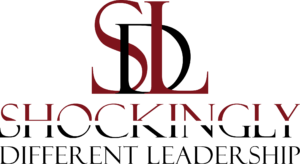
Episode Sponsor
SDL is the go-to firm companies trust when needing to:
- supplement their in-house HR teams with contract or interim HR experts
- implement leadership development programs that demonstrate an immediate ROI and impact on the business

Episode 40 | Using Blended Workforces to Drive Millions in Revenue with Geoffrey Toffetti
Geoffrey Toffetti 00:00
The external third parties, as hard as you try, will never be as integrated into your culture. And so you want your culture to govern the outcomes. And in order for that to happen, you can’t have rogue consultants or 1099’s or whatever roaming around. They have to be rooted into the culture. And the only way to really do that, I have found, is a strong pairing of core employees, internal employees, with those external or temporary resources.
Karan Rhodes 00:03
Blended workforces are one of the hottest talent strategies today, where employers are using a mix of traditional employees with external resources like independent contractors, coaches, consultants, vendors, and technology solutions, all in order to enhance competitiveness, ensure cost flexibility, and expedite business goals. But how are the successful companies infusing blended workforces into their business strategy? And what are the critical success factors and pitfalls to avoid during implementation? And on the flip side, what does it really take for suppliers to improve their chances of finding and landing contract opportunities? The devil is in the details, my friends! I’m your host, Karan Ferrell Rhodes, and it’s time to get smarter about Blended Workforces at Work!Hello, my superstars. This is Karan, and welcome to another episode of the blended workforces at work podcast. We are absolutely thrilled to feature on today’s show Mr. Geoffrey Toffetti. He is the CEO of frontline performance group. And frontline Performance Group is a company that equips hotelers and restaurant leaders in a number of industries. They help them with their methodology framework, and they have a fantastic software called engage that helps them boost revenue and service at their front desk or their front line individuals. But the reason why I’m super excited to have Geoffrey on the episode today is because he has deep experience and leading blended workforces and the concept for enterprise level organizations and even at FPG. I hope I said that right in particular, but we want to hear a lot about his previous experience as well. So obviously, you know why I was dying to have Geoffrey on the show. So welcome to today’s episode, Geoffrey.
Geoffrey Toffetti 01:59
Thank you so much for having me. I’m really excited about it.
Karan Rhodes 02:02
Awesome. You know, I want to call you so bad Jeffrey, because I have a friend that spells it the same way, but sounds like you have maybe the English version, Joffrey. My mom was a fan of Chaucer, and he actually pronounced it Joffrey. It became Jeffrey later. So,
Geoffrey Toffetti 02:17
Oh God, Joffrey, your whole life, and I’ve been answering that question my whole life.
Karan Rhodes 02:22
Well, you know, I had to definitely ask that. I’ll do my best to remember the pronunciation. But welcome so much to the show. Thank you. Glad to be here. Nice. All right. Well, before we delve in, Joffrey, we always love just to learn it just a tad about our guests. So for just as much as you feel comfortable? Can you share a sneak peek for us into your life outside of work?
Geoffrey Toffetti 02:46
Yeah, absolutely. I was. I was actually born in New York, but have resided in Florida since I was a little kid. Moved to Orlando from the St Pete area in 2000 to join a.com and for anyone that was in business at that time, that was the worst time to join a.com because the bubble popped right then, and that that.com actually morphed. We survived, thank God, and we became a leading workforce management company. So as we were saying, you know, my background actually, I grew up in business, doing workforce management strategy and solutions. So this podcast is perfect fit for me, personal level, I am married. I have two sons, a 20 year old and a 16 year old, both avid lacrosse players. I never got to play lacrosse. It wasn’t a thing when I was a kid, and I’m glad that they did, because it’s a lot less dangerous than football, but it’s just as action packed. And I am an avid reader. I read at least one book a week, not always self help and development stuff. I also like science fiction and fantasy, but I try to alternate between fiction and like business self help. So I’m keeping up on the trends and throwing some technology in there. AI is something that’s very important to stay, stay up on and so, yeah, that’d be my my personal life. I think of just family sports and reading. Wow. Well, we have a lot of similarities. Joffrey, family sports and reading are very important to me too. I don’t do as much of books as many as I used to. I used to be like, just like you, an absolute fanatical reader, but now I try to listen to podcasts and read, you know, magazines or articles that are, you know, people are sharing up to date information because, you know, the world of business is moving fast, like by the nanosecond. So yeah, and full disclosure, when I say read now I mean audio books, because I don’t have time to read. So when I get little times to drive somewhere or walk my dog or something. I’m listening to a book.
Karan Rhodes 04:42
Oh, love it. Love it. Well, thank you so much for sharing that.
Geoffrey Toffetti 04:47
Of course.
Karan Rhodes 04:47
Well, let’s jump right in. Geoffrey, if you don’t mind, I know I didn’t do frontline performance group justice, so I would love to first have you share at a high level some of the milestones in your career and then how you landed as the CEO FPGA.
Geoffrey Toffetti 05:01
Sure, as I was mentioning before, I had a long run with a company called Zero chaos, which then became workforce logic, which I just saw. They changed name again, so I don’t even know what they’re called anymore. But before that, I was in hotels. I started as a valet and Front Desk Agent, and worked my way up into my first management job was in a hotel. I got to Director of guest services, and then I left the industry, moved to Orlando and joined this.com startup called zerocast.com and I went in sort of as a I was the third employee. My employee number was three of this company. And when I left, we had over 600 employees. So I grew up, you know, I came in with some management experience, I had managed 30 or 40 people in a couple of departments at a hotel at a fairly young age, but then I started again as an individual contributor and helped build this organization. And so I basically just followed the opportunities where they came. I did all kinds of stuff, as you do in a startup, and I never really specialized except in like product development and problem solving. So I became like the go to critical thinker in the company, and that served me well. And I grew up to Vice President, reported to the CEO there for a while, and then we successfully sold that company. And as you can imagine, being employee number three, I had a lot of stock options. There wasn’t a lot of salary. So that finally matured, which let me think outside the company for the first time in a decade. And right at that moment, I met the founder of FPG, and I had spent 1011, years helping the fortune 500 save money. And what FPG does is help companies make money. And I was like, This sounds like a breath of fresh air. I could help companies make more money through their workforce, which I thought was just amazing. And so I joined the company as a partner and partner for about eight years, and then appointed CEO during COVID. Great time to become CEO is in the worst economic disaster in history, but especially for for hospitality and travel. But the reason was we were converting from a on site consulting training company to a tech first SaaS delivery model, which is more my background than the founders, and it just made sense to have me kind of guide the company through that transition. But Oh yeah, our model, pre COVID was almost hits every aspect of this podcast, core message, we were a vendor, embedding ourselves inside the client organization, helping them manage and train their teams. And we were doing that decentralized all over the world, and in some cases, we were using contractors to be our consultants, because in some geographies, you can’t employ someone without having a corporation there, and that can be very expensive for one person. So we had a blended workforce supporting a highly distributed client base and also performing sort of a staff all function for them. So really interesting evolution of how a small and mid sized company can support global, you know, fortune 500
Karan Rhodes 08:00
And I’m curious. Yes, it is fascinating. I have so many questions. I’m curious, what was the impetus of you all making such a transformation of your business model to go towards a SaaS? Was it because technology was hot at the time, or did you see that kind of need in the marketplace,
Geoffrey Toffetti 08:22
I would say it was three things. Two were within our control, and one was not. We had started to build the technology to enable our people to be more efficient and to deliver some digital training as an Augment to what we’re doing, and to create a way to track the results efficiently and manage incentives and things like that. So we had started to build the company into that direction. And our idea was that, because eventually, if you’re a training company or a consulting firm, eventually the client is going to want to do it themselves,
Geoffrey Toffetti 08:53
and so we were thinking we could leave the technology behind as a way to have a longer tail of revenue. So we were like 70% down the road, on on having what you would call a SaaS platform, and then COVID hit, and they wouldn’t let us come on site for like two years. We were we couldn’t deliver it that way. And in March of 2020, we lost 85% of our revenue. In the third week of March, the company, like, went from we were soaring high to it’s pretty dark and dismal, and I know there were a lot of companies in that same situation, including our clients. So it was a way to resurrect our relationship with our customers during COVID, to give them some a way to help them continue to generate revenue. And the third reason was the consulting and training model, while pretty lucrative, if done well, is not very scalable. Your your your core product is people. And people are complicated, and especially in 40 languages and on four continents, it’s it gets really tricky. So while we still have a decent sized company, it made it so that we could service 10 times as many customers, which is, has what is? What has happened pre COVID? We had a about 400 hotel customers. We’re now over 2500 and we have the same size company, you know? So it just from a scale standpoint. We still do some training and consulting, but it’s more on demand than as a part of the model got you more with support service or aspect versus the driver is that when someone subscribes to the platform, they get a certain amount of support. So all it’s interesting, all of our people that were going on site and working side by side with front desk agents or managers are still the people supporting the hotels. They’re just doing it remotely. So there’s a lot of knowledge baked in there a lot of experience. So when you subscribe, they get access to what we call a customer success consultant that helps them. But if they want to pay extra, we do have a small team that will fly out there and actually do some some consulting and training on site.
Karan Rhodes 10:49
Yeah,
Karan Rhodes 10:54
Gotcha. Makes a lot of sense. Makes a ton of sense. And being a researcher myself on blended workforces, I mean, on paper, it looks great when you’re leveraging, you know, your full time staff, you have some external support, and you might have technology all working together to help you, all you know, run your business and serve your clients. But the devil’s in the details, and so I’m just curious, just initially, before we go deep, where do you see the power is in leveraging business blended workforces, and then also, where do you see their blind spots or things to watch out for as well?
Geoffrey Toffetti 11:36
Yeah, that is a big, good question. So from the benefits, I think it’s what you alluded to. It allows you to manage your peaks and troughs so you maintain a certain fixed cost basis of full time employees. But if you have a cyclical business, or if it’s highly seasonal, it allows you to ramp up without incurring that permanent fixed cost of hiring people full time. It also, as I mentioned, it’s very helpful from a regulatory or legal standpoint or tax standpoint in some jurisdictions, because it’s very onerous to try and hire someone. And if you don’t need to hire 500 people, you just need to hire three. It’s not worth the 1000s and 1000s of dollars or even 10s of 1000s to set up a company. So using contractors as an Augment is also allows you to expand your business without overburdening it. So both of those are critically important and allow you to scale. There’s also, if you threw in there instead of independent contractors, you threw in there vendors, like in technology development, you might have a development house in one country, development house in a different time zone, and you’re not having to hire them. You can hold them more accountable, like a vendor, you know, like they used to say, you have one neck to grab, yeah, when they’re your employees, you can’t do that. You can’t you can’t be as rigorous, right? So that’s also very beneficial. I think the blind spots tend to occur when there is not a very clear framework as to what the deliverables and expectations are for each of those groups, and not having your core employees that are part of your internal culture overseeing the work that the external third parties are doing, because the external third parties, as hard as you try, will never be as integrated into Your culture. And so you want your culture to govern the outcomes. And in order for that to happen, you can’t have rogue consultants or 1090 nines or whatever roaming around. They have to be rooted into the culture. And the only way to really do that, I have found, is a strong pairing of core employees, internal employees, with those external or temporary resources.
Karan Rhodes 13:40
I so agree that was where I was going to go next, because where we witness a lot of strife, if you will, is the lack of onboarding, collaboration and integration of you know, all three. And I say that for your full time employees, your external talent and your technology, there many times gaps in information. And to your point, your full time employees will know, naturally know, you have the intellectual capital and know things without saying it that your vendors or external talent may not. And that gap is when many problems arise and you’re having to go back and pivot or course correct things. So I so agree with you having your internal staff leading or the oversight of your external vendors and finding a way to integrate communications and cross group collaboration as much as possible without stepping on local, federal or country laws, you know, depending on if you’re multinational or global company. So do you see that as well?
Geoffrey Toffetti 14:49
Yeah, I try to err more on the side of transparent communication. You’re exactly right. What happens a lot is people will say, what’s our vendor? We have to be very careful what we say to them.
Karan Rhodes 15:00
Yeah.
Geoffrey Toffetti 15:00
Them, even when it’s not the launch codes, it’s just regular doing business, and they’re supposed to help you do that business, and yet, you’re compartmentalizing things that don’t need to be compartmentalized, because you should have a contract with them,
Karan Rhodes 15:12
Exactly.
Geoffrey Toffetti 15:13
and it’s just as easy for your internal employee to say something outside of work as you would to your vendor. So like we feel like, unless it’s really highly proprietary stuff, don’t fear sharing. In fact, get the vendor on the phone with the employees, get everyone together regularly and continue the mantra, the cadence of of information sharing, and make sure that the the in your internal teams know that the externals are there to help them succeed. Maybe this is also another big misconception. People get very nervous. People are fragile, and they see a vendor coming into play, and they’re like, Oh, they’re here to take my job. It’s more likely that your job will be taken by poor performance in the company than by hiring a vendor. And if a vendor is going to help the company perform better. It’s shoring up security for everybody, and I think it’s important for leaders and companies to constantly remind the team, even the middle management or lower level executives, that their vendor is not here as a threat. They’re here to augment and help. Because as a vendor, we get this all the time. We go to work in a resort environment, and they have a trainer on staff. And while training is a little piece of what we do, it’s not what we do we we’re about performance. So the trainer starts getting nervous, and the trainer starts complaining to their director, and then their director starts raising objections to working with us when they’re not realizing all we’re there to do is help them make more money and be more successful. We’re not there to take a we don’t want to do your new hire training. We don’t want to do that stuff. But it happens because the leadership maybe don’t, doesn’t give the right message. So we actually, when we go to the integration is exactly what you’re saying. We now give leaders the actual communication templates to use with their teams when they’re bringing us in so that we know they’re telling them the right things they’re not people won’t get the wrong idea. I think you’ve hit the nail on the head. If you don’t give your team the right idea, then it creates friction all over the place, in a blended environment.
Karan Rhodes 17:13
Can I just say, Joffrey, you’re my hero, my CEO hero because I so advocate for that. When we go in for consulting, I on the number front, you’re my hero. One is the transparency and communication, and then also the talking points. You know, always similar to you share a few talking points. It doesn’t have to be, you know, a 10 page, you know, slide deck, but talking points to help ensure there’s a low level angst with the employees. And to your point, there’s a reason why vendors are brought in not to take over, but to help supplement and give them air cover as they’re focused on their jobs. And then, you know, others things are supported by the vendor or external expert to help make their jobs even better, more meaningful and have that support. So I love that.
Geoffrey Toffetti 18:00
Well I…I’m happy to be a hero. I appreciate that.
Karan Rhodes 18:02
You know it!
Geoffrey Toffetti 18:05
That’s a great way for me to end my day. Yeah, no, but it is true, and if the messaging isn’t correct, then you do get angst and anxiety and that deep that can derail the entire initiative for no reason, because no, no one has bad intentions. It’s just sometimes bad messaging,
Karan Rhodes 18:21
Absolutely bad messaging. If you don’t mind me pivoting a bit. I know you have have a lot of experience pre your current role in setting frameworks or processes on how enterprise level firms can use blended workforces. So I would love for you to just share an example of one of the case studies that you shared with me in our pre conversation. If you don’t mind,
Geoffrey Toffetti 18:41
Yeah, no, absolutely that there were, there were many,
Karan Rhodes 18:44
Yea, there were many, but just pick one. Just pick one.
Geoffrey Toffetti 18:46
Yeah, I will my favorite one. So we IBM was one of our largest customers. We worked with them in dozens of countries, and we did a very specialized thing for them, aside from managing their vendors, because we are vendor management company, we also managed like we would payroll independent contractors that were identified by IBM. So they had an internal recruiting practice, and they would recruit for contractors, and then they would payroll them with us. So during that, when we were doing that, and we were talking 1000s of people, we partnered with them to create one of the first kind of fragmented work programs for the development of technology. At the time, it was called Liquid Picasso. I think it ended up being called Liquid blue or something like that. But the idea was they could break down technical specifications into micro work, and they could farm that micro work out to their entire 10, you know, independent contractor workforce around the world, and people could bid on it and submit a sample of the work, and then if they accepted it, it would all get stitched together by a core team that would build the software. And it accelerated software development by 3040, 50% at the time. And it was I think the precursor to Fiverr and GitHub and the different places where that people are submitting micro fragments of work and then selling them. And that was fascinating, because we, our role was to onboard all of those people into an environment where they could receive pay from IBM as independent contractor. So we had to vet them, make sure that they had all their things like now in the in the gig economy, people don’t seem to be as concerned about whether or not you are a legal 1099 or not. But back then, it was very I mean, there were 1099 reclassification lawsuits flying around hundreds of millions of dollars of damage. So they had us as like their their safety net screening partner to house these folks know who communicate with them and then ultimately facilitate payment to them. And it was just it was a revolutionary step forward in in the pre gig economy, I think it might have been the first big time that that it had ever happened.
Karan Rhodes 18:51
Wow. That is absolutely amazing, being on the front end of that, and look how it’s evolved over the years, right?
Geoffrey Toffetti 21:06
Oh, it’s incredible. It demystified it, I think. And because we had a platform that would facilitate the relationship between the company and the contractor, and they had the technical know how and demand, we were able to do it because you need both, you need the significant amount of demand, and you need a significant work pool and a way to connect them, which now companies are doing all of it, but it was the vendor. It was a vendor client relationship that pulled it off, which was, was really cool.
Karan Rhodes 21:33
That is cool. That is absolutely amazing. So thank you for sharing that case study, because I know it’ll resonate a lot with our listeners out there? Yeah, it was very cool. I’m happy to be a part of it. There’s another question I’m just really curious about. Well, I have a ton, but one more, I want to make sure we squeeze in with our time with you today. I know a lot of executives such as yourself, really, you know, struggle with what we call vendor fatigue. Where you’re you’re trying to screen vendors, you’re overwhelmed by the 100 pitches every five minutes into your inbox. And so I’m just curious, what types of vendors, what do they do? What are their behaviors that really separate the best from the rest? For you as a CEO?
Geoffrey Toffetti 22:17
That’s also a very good question, and it’s funny, when you were asking my head was going to how do we prevent ourselves from becoming the vendor that people don’t want to hear from, which in some ways might be more relevant? Yeah, because we actually as a company, we’re not that big a company, so a lot of what we do, we still do in house, but we do have some vendors. And I think that the answer is the same both ways. It’s how do you get introduced to the customer that you’re chasing the the cold calling and, oh, and cold marketing is good for like, market awareness, but to actually get in the room with the decision maker, who can, you know, pay you hundreds of 1000s or millions of dollars is still a relationship business, absolutely. So what we focus on, and this is how we’ve met most of our vendors, is word of mouth, and it sounds like it’s so antiquated, but it is the most efficient way to cut through all of that is to actually have someone email someone and say, You should meet Geoff I trust him. He does good work. If that’s all they say you’re going to get right to the top of the pile. It doesn’t have to be this a big dog and pony show. It’s just someone saying you can be trusted to do what you say you’re going to do and from and then, in addition to that, we have a concept that we live by called land and expand. It’s one thing to want to go for the whale and get land that big client, yeah, but it’s better, in my opinion, to go for the first toe, hold, you know, your first toe on the beach, right? And then do a great job and build the relationships where the person that you’re dealing with will send that email either within their own organization or to a colleague at another company, because the land and expand you land like we’ll land one hotel, let’s say with a hotel group, and we’re satisfied with that. We’re not saying you have to give us 100 hotels. Give us one, and we’ll prove ourselves. We’re fine, proving ourselves over and over again, because we know we’re gonna it’s gonna work, right? So it’s really like your reputation and your results is what will build your your pipeline and get you out of that bloody water of vendor fatigue that you’re describing because you’ll be the breath of fresh air. This is what we tell our sales people and our account managers. You want to be the breath of fresh air every time you talk to your customer. Yeah, you want to be the one they look forward to talking to. And if you can accomplish that, then you don’t have to find yourself in that, in that rat race.
Karan Rhodes 24:39
I’m writing that down. You want to be the breath of fresh air to your customers.
Geoffrey Toffetti 24:44
That’s right.
Karan Rhodes 24:45
I love that fresh air. Okay? You think I’m playing listeners. I am writing it down. You’re gonna see that in the show notes.
Geoffrey Toffetti 24:52
That’s great.
Karan Rhodes 24:56
All right. Well, Jeffrey, we cannot let you go without asking you our signature question that we love to ask our guests, and for my newer listeners out there. You may or may not be aware, but our firm actually did quite a bit of research on best practices of leadership execution, and there were seven big buckets that came out of the research of activities, and we call them tactics, that are always included in, you know, any big initiative or thing you’re doing, whether it’s your job, leading at home, leading in your hobbies or what have you. But there, there’s seven big things that are key to successful leadership execution. And Joffrey, you were so kind to share that leading with intrapreneurship really resonated with you. And for my newer listeners out there, entrepreneurship is all about identifying new opportunities to develop or improve operations, products or services. It depended upon, you know, what kind of organization or entity that you’re trying to improve upon, what you focus on, but it’s all about innovation and finding ways to continuously improve and develop. So curious ones want to know Geoffrey, why did entrepreneurship really pop for you?
Geoffrey Toffetti 26:14
Yeah, it was actually difficult. There were a couple in there. Strategic Thinking. Was another one. I wrestled back and forth between those two because they sort of go hand in hand. I would say it’s because I took time to reflect on how I’ve been successful. And here’s another interesting personal fact, I did not go to college, so I had to be very opportunistic. I had to do things in situations that other people wouldn’t have done, because they would have said, that sounds boring, or I don’t know how to do that. And I would just do it because I needed to build a foundation of expertise in in a variety of ways. So sure, entrepreneurship, to me said you seek to solve problems that maybe even that your colleagues or superiors are even aware as a problem or an opportunity. And I’ve done that throughout my career. I’ve I’ve always been the one saying we should do this and then actually build the prototype, do the proof of concept as an example right now, in my company, we are moving full steam into food and beverage and dining.
Karan Rhodes 27:12
I read that! Yeah,
Geoffrey Toffetti 27:13
Yeah. We’ve had our eye on it for five, six years. We did some training and consulting pre COVID and coming out of COVID, we had a limited budget, so we had to pick what to do. Well, now we’re back at the point where we’re doing it. So I’m the one who went and met with the first restaurants. I didn’t send someone. I’m the one who went and said, Okay, what are the key metrics? How are we going to drive the result? How are we going to design the UI? Because problem has to be solved by someone who wants to solve the problem, and that’s always been that’s the most fun of being in business, in my mind, is creating new products, change, you know, innovating what you’re doing to be more flexible, adapting to AI quickly, and bringing it into the business. That’s the stuff that gets me really fired up. And I think that entrepreneurship spoke directly to that.
Karan Rhodes 27:57
Oh, definitely it does. Definitely it doesn’t. I agree with you about the strategic thinking, too. As CEOs, we always have that top of mind as well.
Geoffrey Toffetti 28:05
You almost feel bad not picking it right, but I wanted to honor the spirit of your question, so I went with the one I thought was most accurate.
Karan Rhodes 28:13
I appreciate. I wish we had time to go into all seven, because I know you use all seven at different points in time, but unfortunately, we don’t have an unlimited amount of time. We’ll just have to bring you back for another podcast.
Geoffrey Toffetti 28:24
I’d be happy to come back. I would love to do that.
Karan Rhodes 28:27
All right. Well, thank you so much, Geoffrey, for the gift of your time and sharing the insights with our audience. We could have easily gone another hour or so, but you especially loved your case study of sharing, of how companies and businesses kind of think about best ways to get their work done. We really appreciate you.
Geoffrey Toffetti 28:46
Oh, and I appreciate you right back. And I would love to come back if you’d have me. Absolutely.
Geoffrey Toffetti 28:50
Oh, absolutely we will. Oh, and before I let you go, we always love to give a little bit of air time for because we’ll have it in the show notes, your bio and everything. But we always love to give a little bit of airtime of where folks can find you and your company. So would you mind just sharing the best places to find you all? Yeah, that would be great. The best place to find the company will be www.frontlinePG, (that’s Paul george) .com and there’s a contact form in there, and there’s some case studies and client testimonials and things you can you can peruse. So frontline pg.com, and if they’d like to find me, it’s my first initial last name, G, T, O, F, F, E, T, T, I, at LinkedIn. So my I was lucky enough that I got my first initial last name as my username
Karan Rhodes 29:31
You’re lucky, lucky
Geoffrey Toffetti 29:33
I was an early adopter, but yeah, I would love to hear from anybody who has a front line needs help generating revenue at their front line. It’s all we’ve ever done. I can honestly say we’re the best in the world at it, because we bought our only two competitors. So we are the best.
Karan Rhodes 29:49
You are the best. So listeners, if you’re in the industries that might find their solutions helpful, definitely check Jeffrey and team out. It would definitely be worth your while. Have a conversation, all right? And so thanks once again, Geoffrey, and we’ll soon, okay?
Geoffrey Toffetti 30:06
You’re welcome. Thank you.
Karan Rhodes 30:07
And thanks to you listeners as well for joining this episode. We know that there are literally millions other podcasts that you can be listening to, and we do not take your patronage lightly. All that we ask is that you like and subscribe on your favorite podcast platform of choice, and please share our podcast with just one friend, because by doing so, we’ll all get smarter about blended workforces at work. Thanks a ton, and see you next week. Well, that’s our show for today. Thank you again for listening to the Blended Workforces at Work podcast. You can check out the show notes, additional episodes, bonus resources, and also submit guest recommendations on our website at blendedworkforces@work.com. You can also follow me on Twitter, LinkedIn, Instagram or YouTube by searching for the name Karan Rhodes with Karan being spelled K a r a n. And if you like the show, the greatest gift you can give would be to subscribe and leave a rating on your favorite podcast platform of choice. This podcast has been a production of Shockingly Different Leadership, a global consultancy which helps organizations execute their people, talent development, and organizational effectiveness initiatives on an on-demand, contract, fractional, or project basis. Huge thanks to the SDL production and editing team for a job well done. Bye for now.

Want to be a Podcast Guest?
Check out our guest qualifications and submit our brief form to be considered.
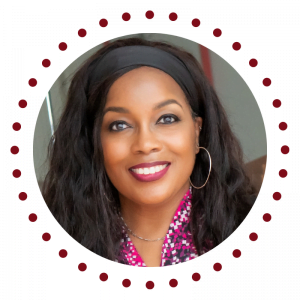
Want Karan to be Your Podcast Guest?
- Blended Workforces & the Gig Economy
- Critical Execution Tactics of High-performing Leaders
- Entrepreneurism & Leading Your Business
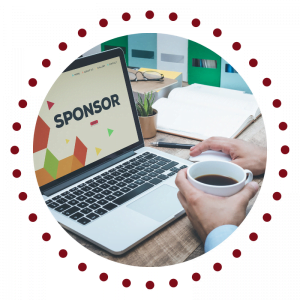
Want to be a Podcast Sponsor?
All sponsorships come with a featured spot on show notes pages.
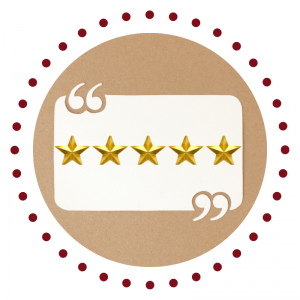
Like the Show? Please Leave a Review
If you like the show, it would mean the world to her if you left a quick review.
Your word is golden, so a HUGE thank you in advance!
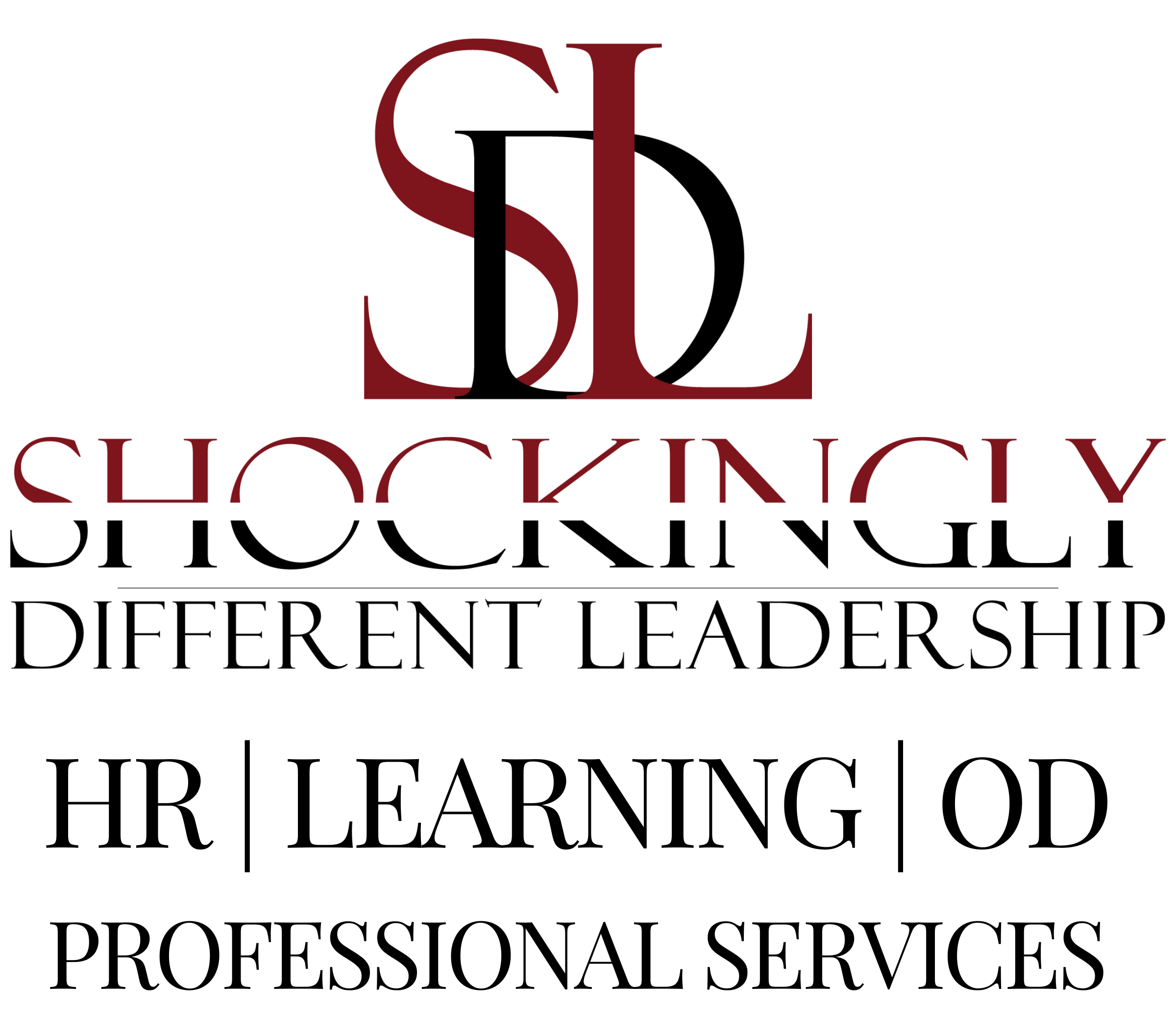
#KeepInTouch
via our podcast alerts
Subscribe now to discover why thousands of monthly listeners who are passionate about doing their best work prioritize time each week to listen to the Blended Workforces @Work podcast.
#AboutSDL
#WhereToFindUs
MAILING
4480-H South Cobb Drive
PMB 219
Smyrna, GA 30080
PHYSICAL
2121 NewMarket Parkway
Ste. 108
Marietta, GA 30067
#ContactOptions
Customer Service Email:
service@shockinglydifferent.com
Call or Text:
770-384-1103
#Office Hours
MON-FRI
8:30 AM – 6:30 PM
Weekends By Appointment

